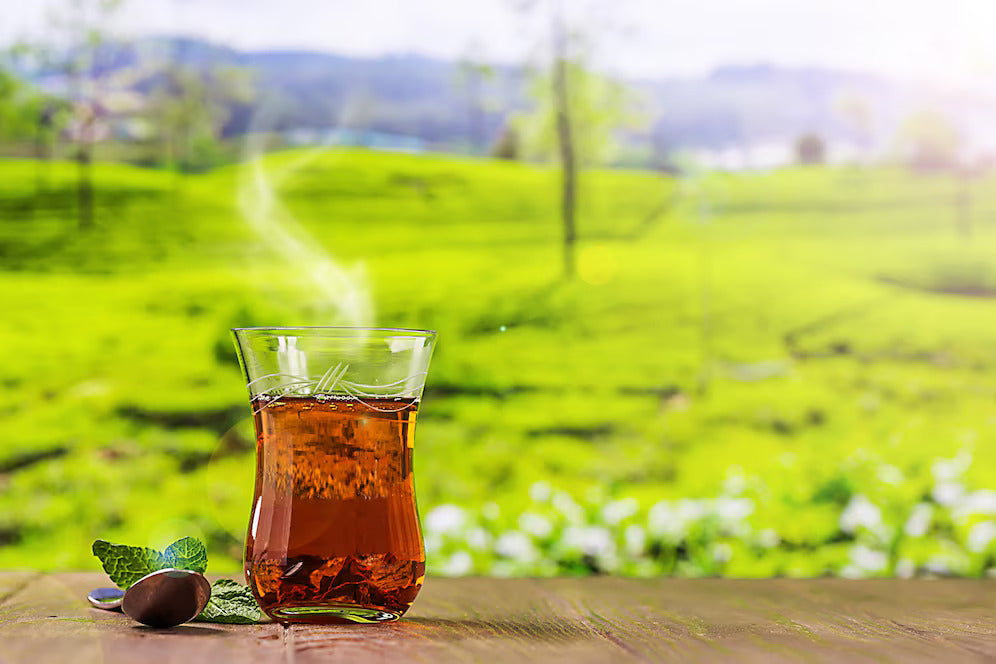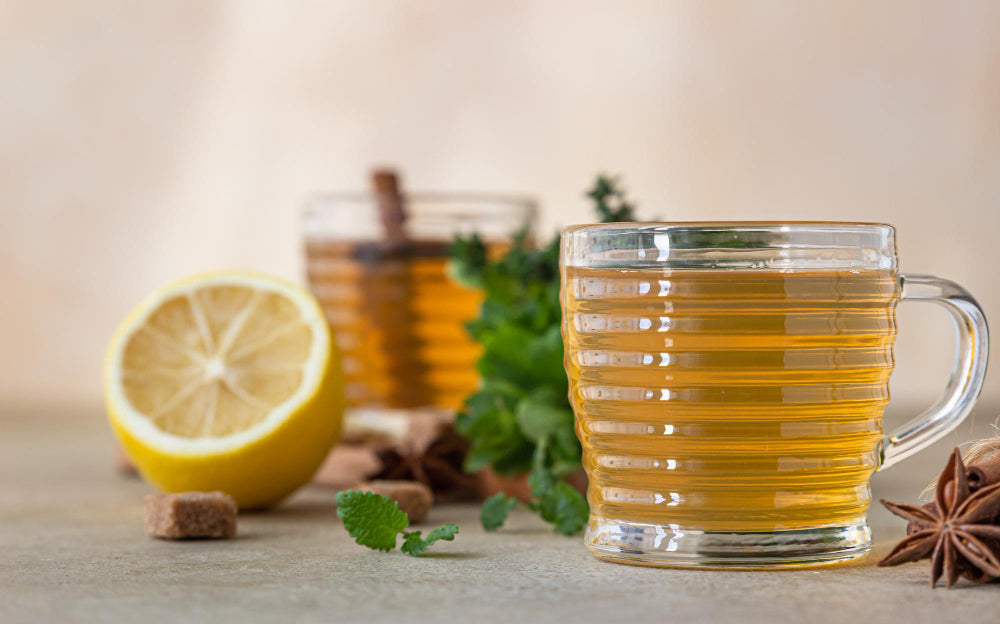What Is Nilgiri Tea? Taste, Benefits & Why It Stands Out

If you’ve never heard of Nilgiri tea, you’re not alone. It’s one of India’s lesser known teas but once you try it, there’s no going back. Grown in the misty hills of South India, this tea is smooth, fragrant, and incredibly refreshing.
So, what makes Nilgiri tea special? How does it taste? And why are more tea lovers worldwide starting to pay attention?
Let’s break it down simple, honest, and sip worthy.
Where Nilgiri Tea Comes From
Nilgiri tea gets its name from the Nilgiri Hills, also known as the Blue Mountains, in southern India’s Tamil Nadu region. The area sits at elevations between 1,000 and 2,500 meters—making it perfect for growing high-quality tea leaves.
Unlike Assam or Darjeeling, which have specific harvest seasons, Nilgiri tea is plucked year-round. The result? A consistently fresh, balanced cup with every brew.
Want to dig deeper? Wikipedia’s Nilgiri Tea page has more on its origin and geography.
What Does Nilgiri Tea Taste Like?
Here’s where Nilgiri tea really shines.
It’s known for being:
-
Floral – but not perfumy
-
Smooth – no harsh edges
-
Light-bodied – easy to sip, even without milk
-
Brisk – a clean, crisp finish
Unlike Assam Tea, which is bold and malty, or Darjeeling Tea, which is musky and fruity, Nilgiri sits comfortably in the middle. It’s lively, yet gentle.
🔍 Quick Comparison:
|
Tea Type |
Flavor Profile |
Body |
Best With |
|
Nilgiri |
Floral, smooth, brisk |
Light-Medium |
Plain or lemon |
|
Assam |
Malty, strong, earthy |
Full |
Milk & sugar |
|
Darjeeling |
Musky, fruity, complex |
Light |
Plain |
If you like a black tea that doesn’t overwhelm but still holds its own, Nilgiri’s for you.
Benefits of Drinking Nilgiri Tea
Beyond taste, Nilgiri tea also brings a few feel-good bonuses:
-
Rich in antioxidants – Helps fight free radicals and supports overall wellness
-
Gentle on the stomach – Less tannic, so it’s a smoother ride for digestion
-
Naturally uplifting – Contains caffeine, but without the jittery spike
-
Hydrating and refreshing – Especially great as an iced tea or cold brew
It's a tea that makes you feel good without being intense.
How to Brew Nilgiri Tea
Simple is best. Here’s how to get the most out of your Nilgiri leaves:
-
Use fresh, hot water (90–95°C / just below boiling)
-
Steep for 2–3 minutes – it’s easy to over-steep, so keep it light
-
Loose leaf or quality tea bags both work
-
No milk needed, but you can add a splash if you prefer
Tip: Try it cold too—it makes a fantastic iced tea.
How to Enjoy Nilgiri Tea
Nilgiri tea is flexible. Here’s how people like to drink it:
-
Morning brew – A lighter alternative to strong black teas
-
Afternoon pick-me-up – With lemon or a touch of honey
-
With food – Pairs well with toast, light snacks, or something citrusy
-
Iced or chilled – Naturally crisp and refreshing
It's one of those teas you can drink anytime and not feel weighed down.
Why Nilgiri Tea Stands Out
There are a lot of black teas out there. So why does Nilgiri deserve a place in your cupboard?
-
Year-round freshness – Thanks to regular plucking
-
Versatile flavor – Works hot, cold, or in blends
-
Under the radar – It’s not overhyped, just quietly excellent
-
Naturally clean taste – Great for new tea drinkers or seasoned sippers
It’s a tea that doesn’t try too hard—and maybe that’s the charm.
Where to Buy Authentic Nilgiri Tea
Looking to try some yourself?
We offer a curated selection of Nilgiri teas straight from the Blue Mountains—fragrant, smooth, and always fresh.
👉 Browse Nilgiri Teas at British Tea
FAQs About Nilgiri Tea
Q: Is Nilgiri tea strong or mild?
It’s medium-bodied—lighter than Assam, stronger than Darjeeling. Easy to drink.
Q: Can I add milk to Nilgiri tea?
You can, but it’s usually enjoyed plain or with lemon. It doesn’t need much.
Q: Does Nilgiri tea have caffeine?
Yes, but it’s moderate. Enough to feel refreshed, not wired.
Q: What makes Nilgiri tea different from other Indian teas?
It’s grown in the South, plucked year-round, and has a smooth, floral taste that’s more balanced and less bitter.
Final Thoughts
Nilgiri tea might not have the spotlight like some of its cousins, but once you’ve tasted it, you’ll understand why it stands out. It’s fresh, floral, smooth—and always reliable.
Whether you’re new to tea or just looking for something different, this one’s worth a sip.



0 comments